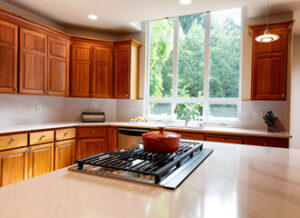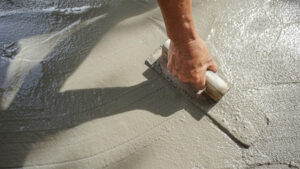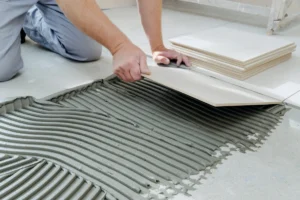Your AC system works on a simple cycle, cooling your home by taking heat out of indoor air and releasing it outdoors. While many minor AC issues are within the realm of DIY repairs, there are times when it’s important to call an expert.
Always keep your vents open in rooms that aren’t used, and move any furniture blocking them to improve airflow. Check your breaker to make sure it hasn’t been flipped. Contact AC Repair Round Rock TX for professional help.
1. Unusual Noises

Most modern AC systems are designed to be quiet as they go about their business. However, that doesn’t mean they are soundproof and will never make a sound. In fact, when AC noises come out of nowhere, they usually indicate a problem with the system that must be addressed immediately. Ignoring these sounds can lead to further damage, reduced efficiency and even system failure. Fortunately, experienced AC repair technicians know how to identify and address problem sounds quickly and easily.
Rattling and clanking noises are a sure sign that something is loose or misaligned inside the unit. The vibrations and constant operation of the AC system can cause screws, bolts, and fan blades to become loose or shift over time. Often, the solution is as simple as tightening up or realigning the affected component. However, it’s important to contact a professional if the issue is serious or cannot be resolved at home.
Clicking sounds are another sign that a major component of the system is faulty or damaged. Clicking is normal when the system turns on and off, but it should not continue for long periods of time. It can also mean that the compressor is not starting properly, which can be a dangerous and costly problem.
Clicking can also be caused by a variety of issues, from dirty filters to worn-out fan belts or refrigerant leaks. Some of these issues are resolvable with DIY measures, such as replacing the filter or cleaning the condenser coil, but others, like squealing or gurgling noises, require the attention of a professional technician. To prevent these problems from occurring in the first place, it’s always a good idea to perform regular maintenance tasks, such as lubricating moving parts on a monthly basis with a commercial AC lubricant.
2. The System Won’t Turn On
Often, an AC unit that won’t turn on can be resolved with basic troubleshooting. It is vital to ensure that your thermostat settings are correct, that the power supply is working, and that the air filter is clean. More advanced problems, like a frozen evaporator coil or low refrigerant levels, require professional attention to resolve safely and effectively.
Firstly, it is important to make sure the system’s circuit breaker hasn’t tripped. This can be caused by a combination of things, such as using too many high-voltage appliances at once or by power surges after a storm. Locate your circuit breaker and ensure it is in the “On” position.
Another common problem with your AC turning on is that it may be clogged up. When your system runs, it creates condensation that exits through a drain line. If this is full or clogged, it will trigger the safety switch and shut off your air conditioning. This can be fixed easily by clearing the drain line with a wet/dry vac or pipe snake.
Finally, if your air conditioner is cycling on and off frequently, it could be due to an issue with the capacitors. These are responsible for starting the compressor and fan motors, but can wear out over time, especially after a long winter followed by a surge of summer use. They can be replaced, but this requires careful handling of high voltage components and part matching.
In addition to clogged filters, other issues that can cause your AC not to turn on include thermostat settings and a faulty electrical connection. Changing the thermostat setting or replacing the batteries can often fix these issues, while a faulty wire or a faulty control board will likely require professional assistance.
3. The System Is Iced Up
If your AC has ice on it, the first thing to do is shut it off and leave it off until the ice melts. If you keep running it, it will continue to try and cool your home while putting a lot of strain on the system. This can cause a frozen coil, damage the compressor, or even create water leaks.
The best way to prevent ice on your air conditioner is to get regular maintenance. Changing the filter, cleaning the coils, and having professionals check for problems like clogged condensate drains are all essential to keeping your system in good shape. A professional can also make sure you aren’t overusing your AC by checking your thermostat and making sure it is the right size for your home.
Having too little or too much refrigerant is another common problem that can lead to an iced-up AC. Having too little will reduce how well the evaporator coil cools, while too much will block the coil from moving heat, causing it to freeze up. This is a serious issue that requires the help of an HVAC technician, especially since handling coolant chemicals can be dangerous.
Blocked vent returns and registers can also inhibit airflow and lead to an iced up AC unit. If you’re worried that this might be the issue, shut off your AC and open all your vents, then clean out or move any furniture that is blocking them. This will allow the system to work as it should and keep your home cool. It will also save you money on energy bills and extend the lifespan of your system.
4. The Vents Are Closed
Many homeowners believe that closing air vents in rooms that aren’t used will help their AC system save energy. This myth is dangerously wrong, and can actually harm your system.
Your AC system is designed to distribute air evenly throughout your home. Closing one or more vents causes your system to work harder, increasing the strain on components like the compressor and evaporator coil. This strain can lead to costly repair bills and a reduced lifespan for your air conditioner.
Air vents are also vital to the temperature balance of your home. Without them, your air can become too dry or too humid. Dry air is uncomfortable and can contribute to health issues like allergies or sinus infections. High humidity is unpleasant and can contribute to a musty smell in your home. The best way to avoid these issues is by keeping your air vents open, investing in a smart thermostat, exploring zoning options and scheduling routine maintenance.
Closing the vents in unused rooms can also cause your ductwork to leak. In fact, the average home loses up to 30% of conditioned air through leaky ductwork. As the pressure in your ductwork increases, more cool air is pushed out of these leaks. This is a waste of energy and money, especially as your air conditioner works hard to compensate for the lost air. This can also increase the temperature in your home, causing your system to overheat and potentially break down. This problem can be avoided by always keeping the air vents in unused rooms open. You should also check the ductwork for any obstructions that could restrict air flow. For example, make sure there are no large items blocking the vents or registers.
5. The Condenser Coil Is Damaged
The condenser coil is a vital component that quietly works behind the scenes to expel heat from your home. But when it becomes dirty, blocked, or leaking refrigerant, it can disrupt your cooling system’s performance and cause energy bills to skyrocket. It can also put undue strain on other AC components and reduce the life of your system. That’s why it’s important to watch for signs that the coil may be damaged or in need of repair.
Dirty Coils
If the coil isn’t as clean as it should be, a simple cleaning can restore its ability to absorb and release heat. But if the coil is covered in a layer of rust or corrosion, you’ll need to replace it entirely.
Damaged Coils
If hail or other weather events damage the aluminum fins around the coil, they can prevent it from absorbing and releasing heat. A technician can straighten these fins using a fin-comb, but in some cases they may be unfixable. If this is the case, the coil will need to be replaced to prevent further damage to the compressor.
It’s best to leave any issues related to refrigerants and the chiller system to professional technicians, as working with these materials requires specialized knowledge and equipment to avoid complications. If you have a minor or isolated issue, however, repairs can often be a smarter financial option than buying a new system altogether.



